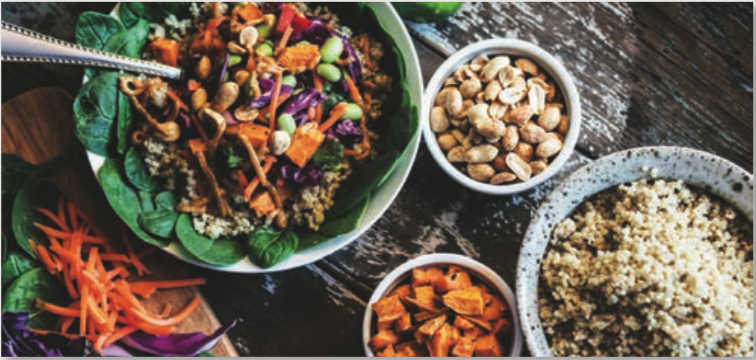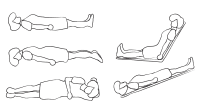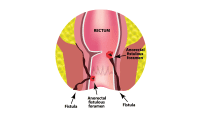The American Nurses Association (ANA) defines a healthy nurse as one who actively focuses on creating and maintaining a balance and synergy of physical, intellectual, emotional, social, spiritual, financial, personal, and professional well-being. Proper nutrition is foundational to being a healthy nurse. Recently, Morrison Healthcare, a division of Compass One Healthcare and a partner of Healthy Nurse, Health NationTM, shared its top five healthy food trends with ANA Enterprise from the 2019 report “Macro food trends in the U.S.”
Ancient grains
You’ll be seeing ancient grains more in grocery stores, prepared foods, and in restaurant offerings, especially as people become more interested in whole and unrefined grains. These super-foods have remained largely unchanged, which introduces cleaner, simpler ingredients to diets. They’re especially beneficial for vegetarians and vegans because they add fiber, omega-3 fatty acids, antioxidants, and plant protein to the menu. Grains such as teff, freekeh, and amaranth are becoming more mainstream as the public’s interest in diverse diets increases.
Healthy snacks
Americans consumed almost 386 billion snacks in 2019, according to the NPD Group Future of Snacking Report. As lives get busier, and people become savvier about nutritional choices, the demand for on-the-go, nutrient dense, flavorful snacks is increasing. Embracing the concept that food is medicine, consumers recognize their choice of snacks contributes to their daily wellness. You’ll see items like chickpea puffs, mushroom chips, dessert hummus, lotus chips, smoked chocolate, insect protein, and alternative jerky when you reach for your next snack.
Plant-based food
What was once a niche market has now grown into a mainstream industry with sales of $4.5 billion. “Currently, 36% of consumers are eating vegetarian or vegan once a week and 39% of consumers are actively incorporating more plant-based foods,” according to the Morrison Healthcare report. Plant-based foods support gut health and the immune system, and they reduce inflammation. Soy, once the dominant plant-based protein, is now sharing shelf space with cashew cheese, macadamia butter, almond milk ricotta, and seitan sausage. Vegetables like cauliflower and zucchini can now be manipulated into other food forms, such as rice and noodles.
Nonalcoholic beverages
A key area for innovation is nonalcoholic beverages, which impact how people socialize. Bottled waters continue to be one of the fastest growing beverage segments, remaining fashionable with consumers. You’ll find nonalcoholic beverages infused with herbs, spices, and fruits—such as cardamom, bergamot, dates, lychee, and tamarind—gaining in popularity. Low-alcohol and no-alcohol products are readily available. Generally, alcoholic beverages contain calories with little or no nutritional benefit. The Centers for Disease Control and Prevention reports that alcohol consumption increases your risk for hypertension, some types of cancer, motor vehicle accidents, risky sexual behavior, and violence. Pregnant women and those trying to become pregnant should not drink any alcohol at all.
Sustainability
Sustainability in food encompasses many elements—organic, free-range, biodegradable packaging, locally grown, ethically sourced, non-genetically modified, no inappropriate use of additives such as antimicrobials or hormones, and fair labor practices. “Brands that highlight their impact on the environment are likely to increase their appeal to consumers,” the Morrison Healthcare report states. A great way to focus on sustainability is to know where some or all of your food comes from—and with farmers market season gearing up, this only becomes easier. Community gardens, backyard vegetable patches, roadside stands, and well-educated foraging are other possibilities.
— Lois Gould is program manager in the Nursing Practice
and Innovation department at ANA. Holly Carpenter is
senior policy advisor in the Nursing Practice and
Work Environment department at ANA.
References
Olayanju JB. Perspectives on the future of snacking. Forbes. October 7, 2019. forbes.com/sites/
juliabolayanju/2019/10/07/perspectives-on-the-future-of-snacking/#2770201e3148
Watrous M. Trend of the year: Plant-based foods. Food Business News. December 27, 2019. food
businessnews.net/articles/15105-trend-of-the-year-plant-based-foods


















